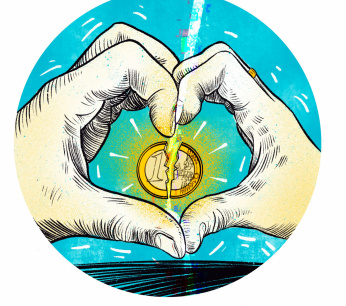Unions agree to work out the new pension system
The FNV members' parliament has this afternoon approved by a large majority to the agreements to renew the pension system. “With the new rules, pensions will become more future-proof,” says AObpension adviser Roelf van der Ploeg.

Picture: Type tank
De FNV also sat on behalf of the AOb at the table to negotiate the pension deal. Last year, the unions, employers and government reached a pension agreement in which the goals for a new pension system were described. Now on June 12, an agreement on the elaboration followed, containing the exact agreements after months of negotiations. CNV supporters already agreed in mid-June.
The new pension rules apply to some 10 million employees, including teaching staff. The ABP pension fund, the fund for education, among other things, will also have to deal with these new rules.
Promises
“It is a major innovation,” says Van der Ploeg. “The most important adjustment is that no hard promises are made about the nominal pension anymore. We no longer say: you will receive 1000 euros per month when you retire, but that will be a goal and will depend on the proceeds of the pension fund. In the new system you can see how much money is in the pot, the share of pension assets and the expectation of what pension will be in return. ”
Pension funds can distribute more easily and sooner if there is enough money. But they can also cut more quickly if things are not going so well
The funding ratios, the money that pension funds must now have in cash to pay for their pensions in the future, are taken out as the dominant factor. Just like the agreements on interest rates. It means that pension funds can distribute more easily and sooner if there is enough money. But also that they can cut back more quickly if things go less well. For example, because of the proceeds in 2019, there is now a lot of money in the cash, but they cannot increase the pensions because they are bound by agreements about funding ratios and interest rates.
“That cannot be sold. Retirees are lagging behind, while pension funds have never been so rich. ” Van der Ploeg does say that the agreement is that if things go badly in a year, the blows will always be divided between the employed and the pensioners and that buffers will also be built in. "In the scenarios, it seems that all ages will benefit from this new system."
Premiums
Another new rule of the game has to do with the uniform premiums. Now everyone pays the same premium and then receives the same pension accrual. That will change: it has been agreed that employees will continue to pay the same contributions, but what these contributions yield in terms of expected pension differs per age group and is therefore no longer the same standard pension accrual. Young people's money can pay off for longer and is therefore expected to yield a higher pension.
Van der Ploeg says it is good that the supporters of the FNV have agreed. "This is necessary for a future-proof pension." On June 22, Minister Wouter Koolmees of Social Affairs and negotiator sent on behalf of the government a letter to the House. The details of the pension deal must now be converted into legislation. Then it is the turn of the pension funds. January 1, 2026 is the deadline for everything to be entered.
You will find more information and frequently asked questions and answers in this article waarin AObpension adviser Roelf van der Ploeg explains.
You can read the reaction of Han Busker, FNV chairman, to the approval of the members' parliament in this news item.


